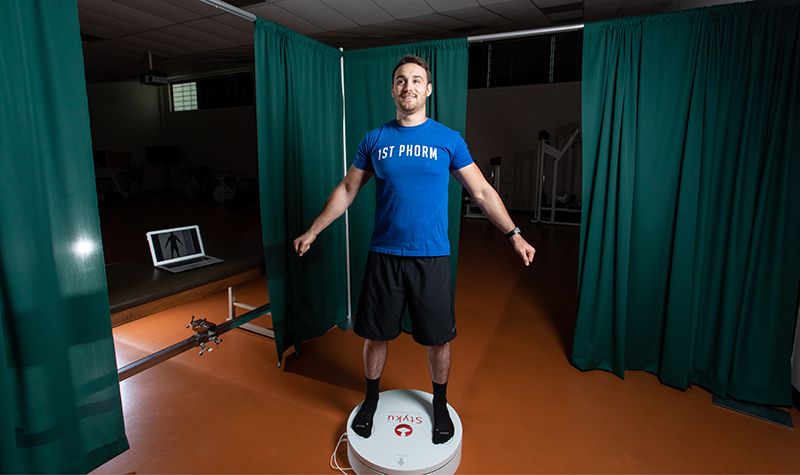
14th September 2020 - A new study published by the University of North Dakota (UND) shows that the Styku 3D body scanner could have a major and lasting impact in athletics, physical health and rehabilitation, including helping to identify future sporting stars.

The aim of the study, which examined 49 UND athletes (30 females, 19 males; 17 Division I collegiate athletes, 17 CrossFit athletes, and 15 kinesiology students), was to determine the test-retest reliability of a portable, single-camera 3D body scanning system (Styku S100) to assess circumferences, and whole-body and segmental surface areas and volumes of athletes.
Tracy Morrell, Director of International Sales for Styku, commented on the exciting findings of this groundbreaking research: “We’ve always recognized Styku’s potential to be utilized and make a difference within athletics and elite performance, but it’s great to now have the research to back it up. Elite athletes have certain physical characteristics that stand out compared to the general population. Styku makes it much easier to discover and compare these indicators, and perhaps the next great International sports champion is just a scan or two away!”
Traditionally, researchers and practitioners in health and sports performance have used skin-fold calipers and circumference tapes to perform direct, manual anthropometric assessment. However, these methods are invasive, place a burden on the participant, require a high level of tester/trainer expertise, and can’t directly measure whole or segmental body surface areas and volumes. Thankfully, 3D body scanners, like Styku, have sped up and simplified anthropometric assessment, considerably reducing these issues.
Using just a simple, weight scale turntable for users to stand on and a high-powered, 3D camera, Styku can even be set up in “self-service” mode, which means participants can scan themselves without the need for a tester in the room, delivering a comfortable, non-invasive experience that engages and motivates users. Additionally, because Styku’s system uses non-harmful infrared light to collect data, rather than radiation or magnetic resonance imaging, it’s much safer, and multiple scans can be conducted in close succession. This means coaches, trainers, scientists, and other practitioners can use this portable technology to measure sports teams, and other large groups, quickly and effectively without the invasiveness or technical proficiency required with manual practices.
Until now, there hasn’t been much scientific-measurement data gathered on athletes outside of manual methods, largely because of how expensive these studies are to run. 3D body scanning technology works by creating millions of data points across the human body for precise and consistent measurement and can typically cost tens or even hundreds of thousands of pounds. However, evidence from the UND researchers proves that those same measurements - readily comparable to what’s gathered from more sophisticated systems - can be produced by Styku in just 35 seconds and at a fraction of the cost.
Unsurprisingly, this technology is expected to become even more prevalent in the years ahead because 3D measurements can provide better indicators of health, fitness and physical performance than lengths or circumferences, for example. Compared to manual methods, 3D body scanning has made it much easier - and in some cases possible - to examine body composition markers linked to the risks of chronic conditions, such as heart disease, as well as the performance capabilities of athletes. This gives researchers the opportunity to analyze new measurements that could potentially lead to improved treatments and performance.
“The exciting thing about Styku is that it can be used across multiple sectors and disciplines; anywhere changes in body metrics, body composition and posture are important to evaluate," added Tracy. "As Styku becomes even more widely used, the database of 3D body scans will continue to grow, helping to inform health and performance-based intervention. Ultimately, this will give researchers and practitioners a better understanding of how shape indices or measures translate to peak performance, recovery from injury and more. We believe this is just the beginning for Styku and unlocking the potential of 3D body scanning.”
For more information about Styku's most recent validation studies, please www.styku.com/research
For more information about the Styku 3D body scanner, Book Meeting with a team member.